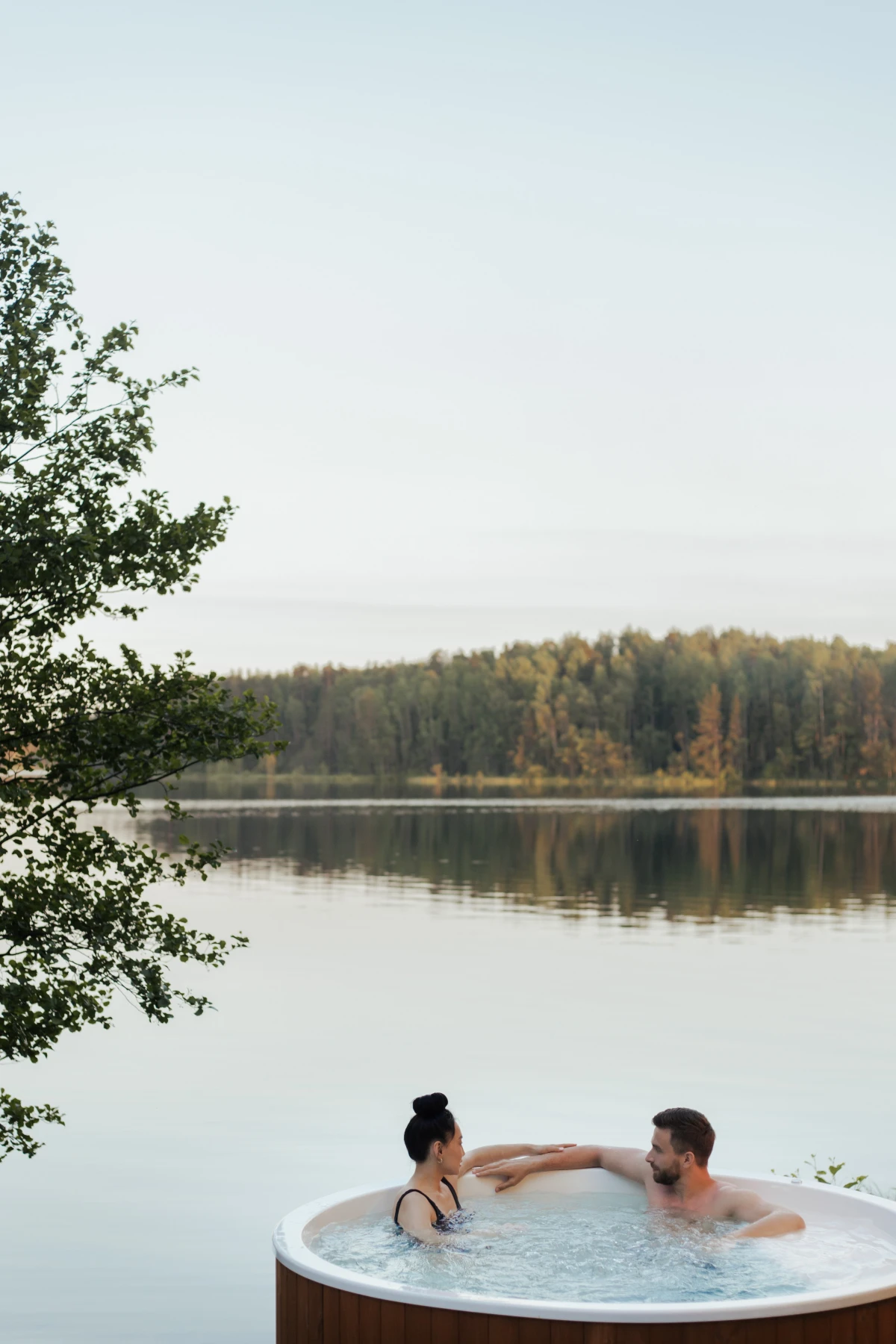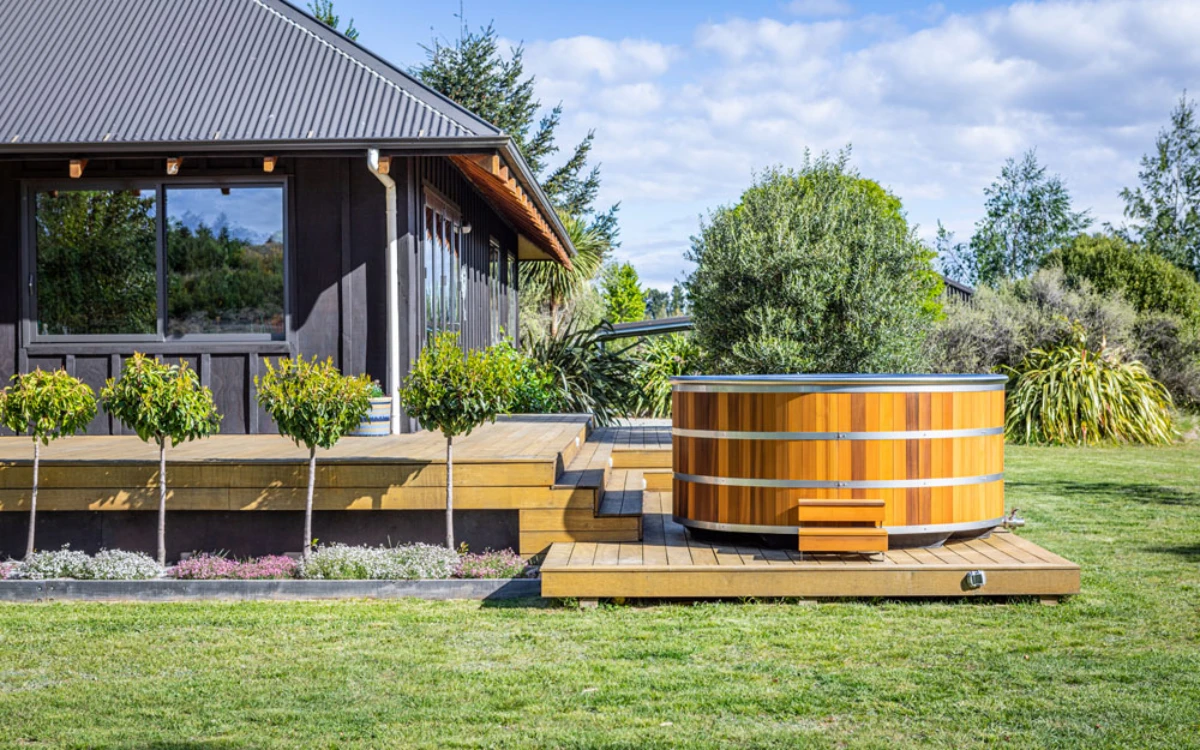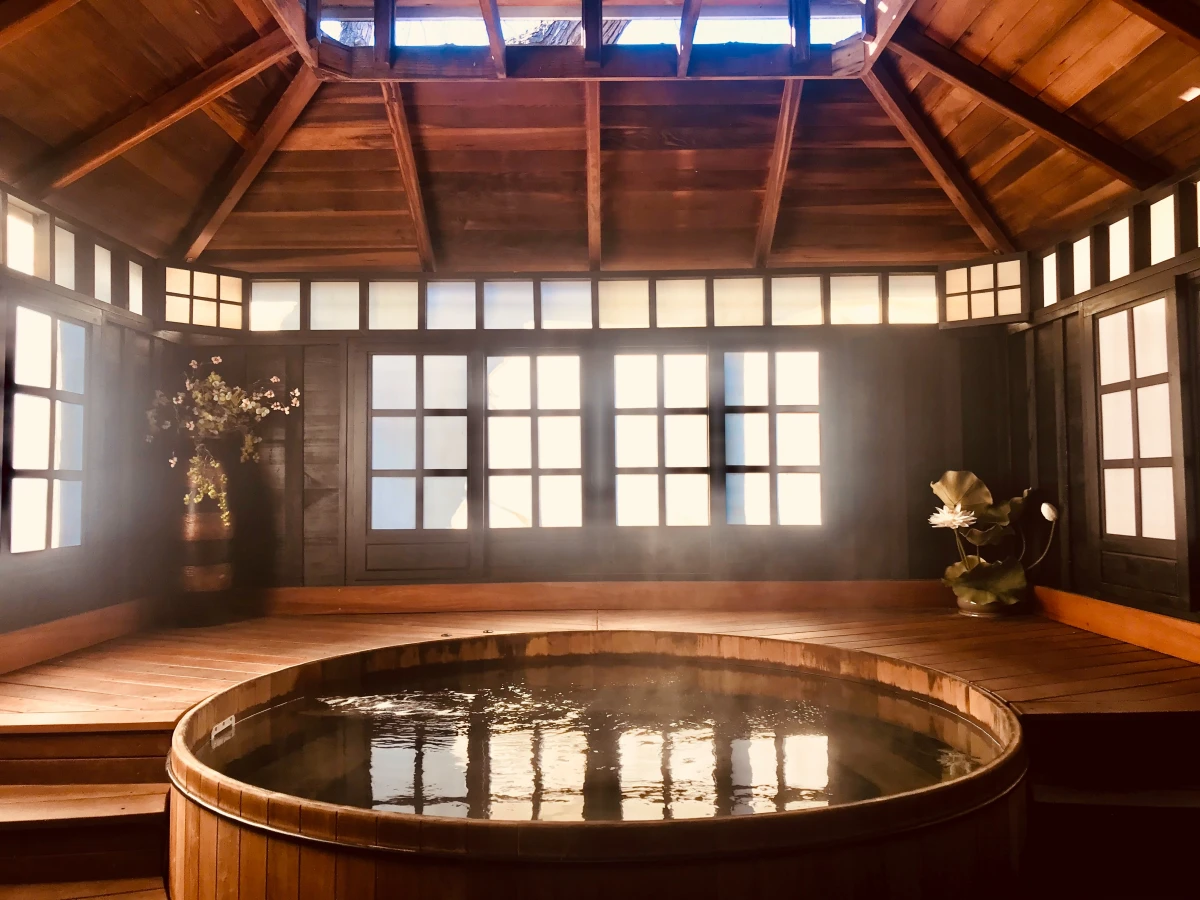A Pro’s Guide to Hot Tub Guts: What’s Really Under the Lid
I’ve spent more years than I can count with my head inside a hot tub cabinet, fixing, installing, and sometimes just marveling at what can go wrong. I’ve seen spas that were pristine after a decade and others that looked like a science experiment after just one season. The difference? It’s not luck. It’s knowing what’s actually going on under the shell.
In this article
Most people just see a big tub of hot, bubbly water. They get sold on the fancy lights and the sheer number of jets. But a hot tub is a complex little ecosystem. It’s a delicate dance of water moving, heating, and cleaning itself in a constant loop. If you understand this loop, you’ll make a smarter purchase, save a ton on your electric bill, and know how to fix the little problems yourself before they become wallet-emptying disasters.
So, let’s forget the slick marketing terms for a minute. Let’s talk about what’s really happening in there and why it matters.

The Heart of It All: The Water Circulation Loop
Everything, and I mean everything, in your hot tub depends on moving water in a circle. Every single drop gets pulled out of the tub, scrubbed clean, heated up, and then shot back in through the jets. If one part of that journey gets blocked or breaks down, the whole system grinds to a halt. The first thing I teach any new helper is simple: just follow the water.
1. Where the Water Goes Out (The Suction)
The journey starts when water gets pulled out of the tub. This happens in two main places: the skimmer and the main drains.
The skimmer is that rectangular slot near the top of the water. Its only job is to skim the surface, pulling in floating stuff like leaves, body oils, and sunscreen before they have a chance to make things gross. Inside, there’s a basket that catches all the big junk. This is your first line of defense, so keeping it clean is a no-brainer.

Lower down, usually in the footwell, you’ll find the main drains or suction fittings. They pull water from the bottom of the tub to make sure everything gets circulated properly. Quick heads up! Older tubs sometimes had a single, powerful drain, which was a major safety hazard. Modern safety standards, which all reputable makers now follow, require at least two suction outlets for each pump. This splits the suction power, making it virtually impossible for a dangerous amount of force to build up in one spot. It’s one of the first things I look for when inspecting a used tub.
2. The Engine Room (The Pump)
Once the water is pulled from the tub, it flows to the pump. This is the true engine of your spa. It’s a motor that spins a little fan-like part called an impeller, which sucks water in one side and shoves it out the other under pressure.

You’ll usually find one of two kinds of pumps:
- Two-Speed Pumps: This is the workhorse in most tubs. On low speed, it quietly circulates water for heating and filtering, using very little power. When you hit the ‘Jets’ button, it kicks into high speed, unleashing the power for your massage.
- Circulation ‘Circ’ Pumps: Higher-end tubs often have a small, dedicated circ pump. This little guy runs 24/7, sipping electricity while constantly filtering and heating your water. A separate, big pump stays on standby just for the massage jets. Honestly, if you live in a colder climate, a circ pump is worth its weight in gold for the energy savings and near-silent operation.
A common mistake I see is people running their main jets on high all the time, thinking it’s keeping the tub cleaner. It’s not. All it does is skyrocket your electricity bill and wear out the pump faster. Let the low-speed or circ pump do its job.

3. The Cleanup Crew (The Filter)
From the pump, water gets blasted through the filter. This is where the magic happens for water clarity. Most spas use pleated cartridge filters—those white cylinders of folded fabric. They can trap tiny particles like skin cells, dirt, and other gunk the skimmer basket misses.
Over time, that gunk clogs the filter. A clogged filter is the root of about 75% of all hot tub problems. It causes weak jets, heating issues, and those dreaded ‘FLO’ error codes. Here’s a super simple maintenance routine that will save you a lot of headaches:
Quick Tip: Every 2-4 weeks, just pull the filter out and give it a good, strong rinse with a garden hose. Every 3-4 months, do a deep clean by soaking it overnight in a filter cleaning solution. You can grab a bottle for about $15-$25 at any pool store or online. A brand-new filter will run you between $25 and $75, so keeping yours clean is just smart money.

4. Getting Toasty (The Heater)
After it’s been cleaned, the water flows into the heater. It’s usually a stainless steel tube with a heating element inside, like in an electric kettle. The spa’s computer brain tells it when to turn on, but only if it senses that water is actually flowing. This is a critical safety feature. If the heater turned on with no water, it would burn out in seconds and could even melt the plumbing. This is exactly why a dirty filter can stop your tub from heating—the clogged filter slows the water flow so much that the safety switch won’t let the heater turn on.
5. The Grand Finale (The Jets)
Finally, the clean, hot water is sent back to the jets. The powerful massage you feel isn’t just from water pressure. It’s a clever bit of physics. As water is forced through a tiny opening in the jet, it speeds up and creates a vacuum, sucking in air from a separate line. That mix of air and water is what creates that amazing, bubbly massage. The air control dials on your tub simply open and close those air lines, letting you customize the feel.
The Body and Bones of Your Spa
The water loop is the system, but the physical structure is what makes it last. Let’s look at the parts you can actually see and touch.
The Shell: It’s Not Just a Pretty Color
Most quality tubs have a cast acrylic shell. It’s smooth, durable, and easy to clean. But the acrylic is just the pretty surface. The real strength comes from what’s underneath: multiple layers of fiberglass and resin for reinforcement. When you’re shopping for a tub, new or used, press down firmly on the floor and seats. It should feel rock solid. If it feels flimsy or has a lot of flex, walk away. Those shells are prone to cracking, and that’s a repair you don’t want to pay for.
The Cabinet: More Than Just Walls
The cabinet holds everything together. I personally prefer composite or steel frames over traditional wood because they can’t rot or get eaten by pests. But here’s the most important part: make sure you can get the panels off on all four sides. I can’t stress this enough. Leaks can happen anywhere. If a technician has to spend two hours just trying to access a leaky fitting because there’s only one service panel, your repair bill just doubled. Good access saves you money, period.
Insulation: The Unseen Money-Saver
How your tub is insulated will directly affect your monthly utility bill. It’s a huge deal, especially in places with actual winters.
Some tubs are Full-Foam, where the entire cabinet is filled with spray foam. This offers the best heat retention, hands down. The downside? If you get a leak, it’s an absolute nightmare to fix. It involves hours of digging out wet, messy foam to find one tiny drip. I’ve been there, and it’s not fun.
Other tubs use Perimeter Insulation, with rigid foam boards lining the inside of the cabinet. This creates a pocket of trapped air that’s warmed by the pump, which is pretty efficient and makes servicing a thousand times easier. You might also see Thermal Wrap styles that use reflective layers, kind of like a space blanket for your spa.
If you live where it gets seriously cold, the R-value of a full-foam tub might be worth the risk. For more moderate climates, perimeter insulation is often the more practical, service-friendly choice.
Oh, and speaking of saving money on heat… your hot tub cover is just as important as the insulation inside. Did you know a waterlogged cover can weigh over 150 lbs and can literally double your heating bill? If lifting your cover feels like a deadlift, it’s shot. It’s soaked with water and sucking the heat right out of your spa. A good, new cover will cost between $400 and $700, but it’ll pay for itself in energy savings.
Where You Put Your Tub Matters
A hot tub needs a perfectly level and solid foundation, like a 4-inch thick concrete pad. If you’re thinking about putting it on a deck, you MUST consult a structural engineer. A filled hot tub with a few people in it can weigh over 5,000 pounds. Most decks are not built for that.
And now for the most important part: the electrical setup. This is not a DIY job. A full-size tub needs a dedicated 240V circuit installed by a licensed electrician. This involves a special GFCI breaker that shuts the power off in an instant if it detects a fault, preventing electrocution. Depending on the distance from your main panel, expect this to cost between $500 and $1,500. Don’t try to save money here. It’s the most critical safety feature of the entire system.
Tips for Buying a Used Hot Tub
Thinking of saving some cash with a used spa? Great idea, but you need to be careful. Here’s a quick checklist:
- Demand a Wet Test: Never buy a used tub you haven’t seen filled and running. Turn on all the jets and lights. Check carefully around the base for any drips or leaks.
- Inspect the Shell and Frame: Look for any cracks or blisters in the shell. Get down on the ground and check the wooden frame (if it has one) for any soft, rotted spots.
- Check the Equipment: Ask how old the cover, pump, and heater are. These are the most common parts to fail.
- Budget for a New Cover: Just assume the one it comes with is junk. Factor that $400-$700 replacement cost into your purchase price.
Quick Troubleshooting for Common Headaches
Before you call for a service tech (who usually charges $100-$150 just to show up), try these steps. You’d be surprised how often they work.
Problem: The jets feel weak.
- Is the water level high enough? It should be about halfway up the skimmer opening.
- Is the filter clean? Take it out and run the jets. If they’re powerful again, you’ve found the culprit. Clean or replace that filter!
- Are the diverter valves open? These are the big dials that move water between different seats. Make sure they’re not closed or stuck in the middle.
- Could it be an air lock? This often happens after a refill. Here’s how to fix it safely:
1. Turn OFF the power at the breaker. Safety first! No shortcuts. 2. Find the main pump and locate the two large plastic nuts (called unions) on either side of it. 3. Put a towel underneath to catch a little water. 4. SLOWLY loosen the union on the top or discharge side of the pump—just until you hear a hiss of air and see a trickle of water. 5. Once the hissing stops and you have a steady trickle, hand-tighten the union back up. That’s it! Turn the power back on and you should be good to go.
Problem: The tub isn’t heating.
- Check the filter first! I know I sound like a broken record, but a clogged filter is the #1 cause of a non-heating tub.
- Look at the display. Are there any error codes? ‘FLO’, ‘OH’, or ‘DRY’ point you toward the issue.
- Is the temperature actually turned up? You’d be amazed how many service calls this solves.
- Reset the GFCI breaker. Turn it off, wait a full minute, then turn it back on.
If those steps don’t solve it, then it’s time to call a pro. It could be a bad sensor or heating element, and that’s not something you want to mess with.
A Final Thought
A hot tub is an amazing thing to have, but it’s a powerful piece of equipment that needs a little respect. Keep the cover locked, stay on top of your water chemistry, and never, ever mess with the electrical wiring. By understanding how it all works, you go from just being a user to being a smart owner. And that knowledge is what will let you relax and enjoy your investment for years to come.










